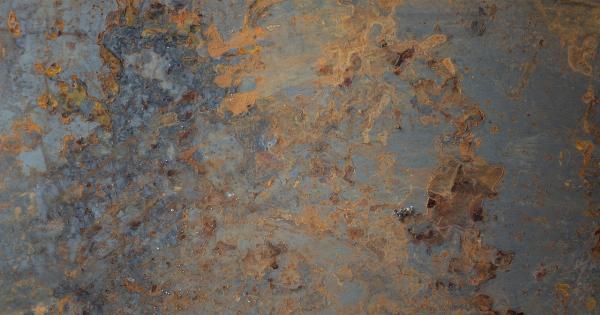Warts and breaks can both appear on the skin, but they are two entirely different conditions. It is important to be able to distinguish between the two to ensure proper treatment and care.
In this article, we will discuss the characteristics of warts and breaks, and provide helpful tips on how to tell them apart.
What are Warts?
Warts are small, rough growths that usually appear on the hands and feet. They are caused by the human papillomavirus (HPV) and are highly contagious. Warts may vary in size, shape, and color, and can be either flat or raised.
They are often surrounded by thickened skin and may have tiny black dots, which are actually blood vessels.
Types of Warts
There are several different types of warts, each with its own unique characteristics:.
Common Warts
Common warts usually appear on the fingers, hands, and knees. They are rough, raised, and have a cauliflower-like appearance. Common warts may be gray, brown, or flesh-colored.
Plantar Warts
Plantar warts develop on the soles of the feet. They can be quite painful, especially when walking or standing. Plantar warts are usually flat, but may have small black dots in the center.
Flat Warts
Flat warts are smoother and smaller than other types of warts. They often appear in clusters on the face, legs, or arms. Flat warts are usually pink, yellow, or light brown in color.
Filiform Warts
Filiform warts have a long, thin, finger-like shape. They commonly appear on the face, particularly around the mouth or nose. Filiform warts tend to have a flesh-colored or slightly pink appearance.
What are Breaks?
Breaks, on the other hand, are not caused by a viral infection like warts. They are small openings or ruptures in the skin, often resulting from excessive dryness.
Breaks can occur anywhere on the body and are more common in areas that experience frequent friction or pressure, such as the hands and feet.
Characteristics of Breaks
Breaks have several distinctive characteristics that set them apart from warts:.
Appearance
Breaks usually appear as shallow, linear cracks in the skin. They may be red, pink, or white in color. Unlike warts, breaks do not have a rough or raised surface.
Symptoms
Breaks can cause discomfort, pain, and itching. They may bleed or ooze clear fluid. In some cases, breaks can become infected, leading to further complications.
Causes of Breaks
Breaks are often caused by dry skin, which can be a result of environmental factors, such as low humidity or cold weather. Frequent handwashing or exposure to harsh chemicals can also contribute to dryness and the development of breaks.
Treating Warts
Treatment for warts may vary depending on the type and severity. Over-the-counter topical treatments containing salicylic acid can help remove warts.
However, it is important to follow the instructions carefully and avoid applying these treatments to sensitive areas, such as the face or genitals.
If home remedies do not work, a dermatologist may recommend other treatment options, such as cryotherapy (freezing the warts with liquid nitrogen), laser therapy, or surgical removal.
Preventing Breaks
To prevent breaks, it is important to keep the skin well-moisturized and hydrated. Use a gentle, moisturizing soap and apply a thick moisturizer or emollient cream regularly, especially after washing your hands or taking a shower.
Wearing gloves when performing activities that may cause friction or pressure on the skin, such as gardening or cleaning, can also help prevent breaks. Avoid using harsh chemicals or irritants without proper protection.
Differentiating Warts from Breaks
While warts and breaks may have some similarities, there are key differences that can help in telling them apart:.
Location
Warts often appear on the hands and feet, while breaks can occur on any part of the body, but are more common on areas exposed to friction or pressure.
Appearance and Texture
Warts have a rough or raised surface, unlike breaks, which are usually flat and have a smoother appearance.
Color
Warts may vary in color, including gray, brown, or flesh-colored, while breaks are typically red, pink, or white.
Symptoms
Warts may cause itching, but they are usually painless unless they are in an area that experiences repetitive friction or pressure. Breaks, on the other hand, can be painful, itchy, and may bleed or ooze fluid.
If you are unsure whether you have a wart or a break, it is always best to consult with a healthcare professional or dermatologist for an accurate diagnosis.





























